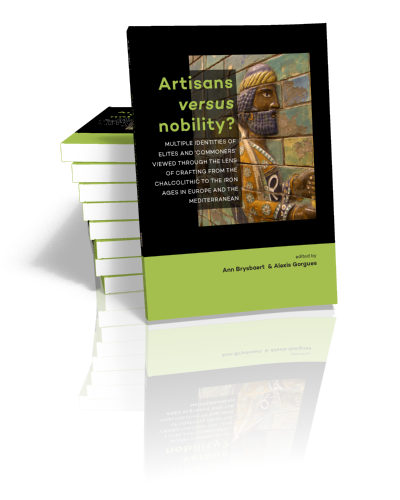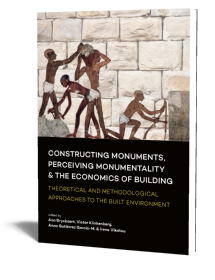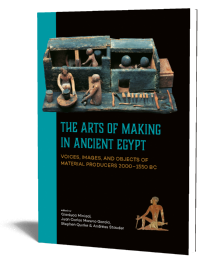Abstract:
In prehistoric Europe hierarchic societies arose and developed technological systems and processes in the production of objects related to everyday use, on the one hand, and items of religious and symbolic character emulating prestige and luxury, on the other, while both types of objects may not always be clearly distinguishable.
This volume deals with questions of how artisans and other social groups, involved in these productive processes and social practices, reacted to and interacted with the demands connected with elites identities formation, affirmation and reconfirmation practices. Innovations and the development of new technologies designed to satisfy the needs of ostentatious behaviour and achieving prestige are key issues of this volume. For example, how can we identify the consequences of such processes, how can we define the role(s) that the craftspeople played in such contexts, and are these always as clear-cut as usually portrayed?
The book’s common aim is to investigate the economic, socio-political, as well as the technological contexts and backgrounds of the make-up of material culture and technologies in specific prehistoric periods. We examine which role(s) artisans may have played in status and identity formation processes, in rituals and in symbolic performances, in other words, in each aspect of life and death of selected Chalcolithic, Bronze and Iron Age populations in Europe and the Mediterranean. Many aspects of the social interaction patterns between the different groups of people in those periods have not been adequately discussed and investigated, especially the artisans’ important role(s). This volume aims to redress these imbalances by investigating how social groups interacted with each other, and how we may recognize such interactions in the material remains.
Contents
Editors’ Biographies
List of contributors
Editors’ Acknowledgements
Artisans versus nobility? Crafting in context. Introduction
Ann Brysbaert
Production as activity. Defining the context of casting production in late prehistoric Scotland
Daniel Sahlén
A place for crafting? Late Bronze Age metalworking in southern Scandinavia and the issue of workshops
Anna Sörman
The power of production in the northern Iberian world (6th-3rd centuries BC)
Alexis Gorgues
Rich metallurgists’ (?) graves from the Varna I cemetery. Re-discussing the social role of the earliest metalworkers
Verena Leusch, Steve Zäuner, Vlado Slavčev, Raiko Krauß, Barbara Armbruster and Ernst Pernicka
Who’s in charge here? The making of military communication vectors in the Late Iron Age in western Europe
Alexandre Bertaud
Chipped stone tools from the Early Bronze Age settlement of Minferri (2100-1650 cal. BC) (Lleida, Spain). Raw materials, technology and activities inferred
Dioscorides Marín Castro, Juan F. Gibaja Bao, Natalia Alonso Martínez, David Ortega Cobos, Antoni Palomo Pérez and Andreu Moya Garra
The artisans of metal and the elite in the western Hallstatt zone (630-450 BC)
Emilie Dubreucq
For blacksmiths, are advanced technical skills the way to achieve elite status? The case of the Western Hallstatt area during the transition between First and Second Iron Ages
Anne Filippini


Prof. dr.
Ann Brysbaert
Ann Brysbaert is Professor in Ancient Technologies, Materials and Crafts at the Faculty of Archaeology, Leiden University (NL), and since 1/3/2022 also the Director of the Netherlands Institute in Athens (NIA). She is Principal Investigator of the SETinSTONE project (ERC-CoG, grant nbr 646667) held at Leiden University. Previously, she held permanent and senior research positions at the Universities of Leicester, Glasgow, Heidelberg and Leiden. In 2014, she was Professeur Invitée at Bordeaux Montaigne University.
read more


Dr.
Alexis Gorgues
Alexis Gorgues is Associate Professor in Late Prehistoric Archaeology at the University of Bordeaux Montaigne. He was previously fellow of the Casa de Velázquez (Ecole des Hautes Etudes Hispaniques et Ibériques, Madrid, 2003-2005), and Assistant Lecturer at the University of Toulouse 2- Jean Jaurès. He directed excavations in Southern France and Spain, on Late Bronze Age and Iron Age settlements as well as in potters’ workshops.
read more












